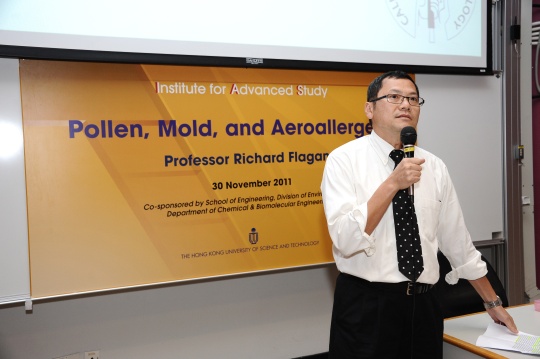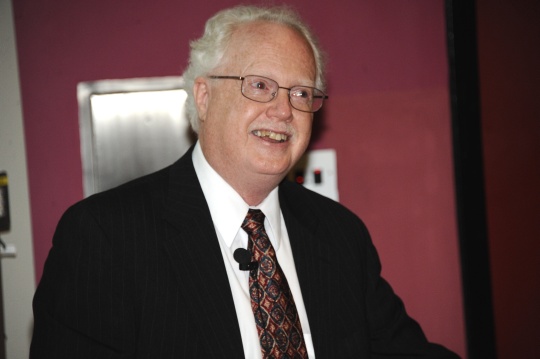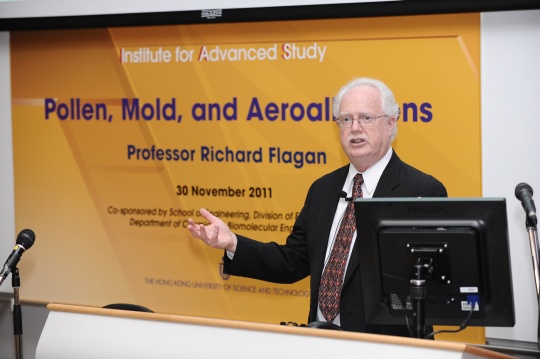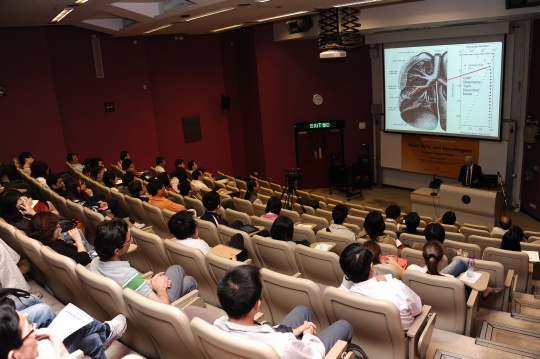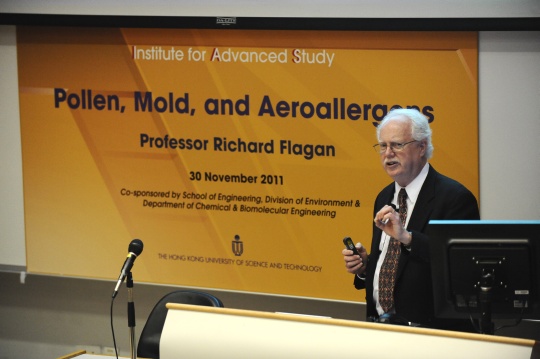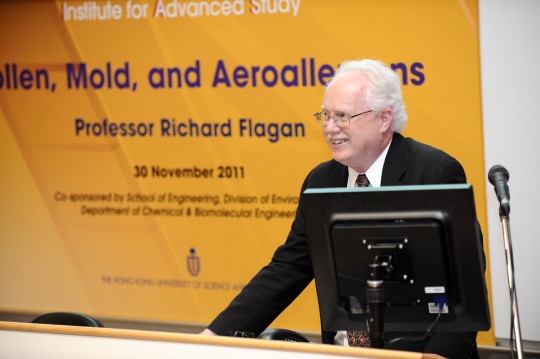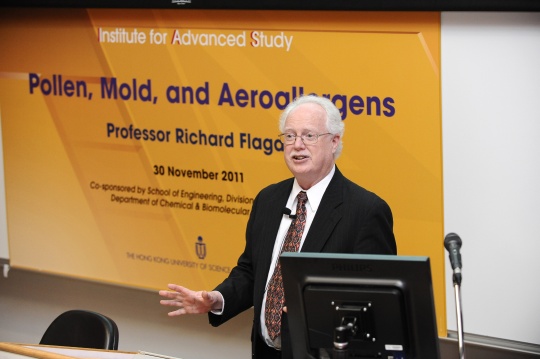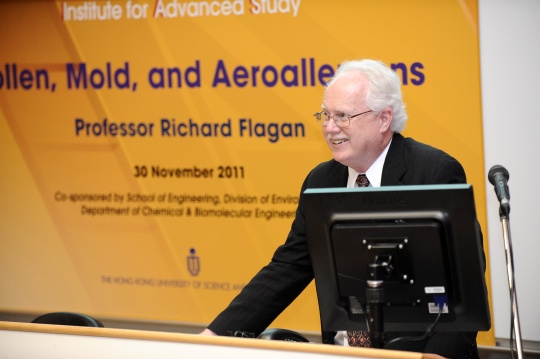Pollen, Mold, and Aeroallergens
Abstract
Pollen particles are so large that most of them deposit in the nose and throat when inhaled, yet allergists warn asthmatics that pollen may trigger inflammation deep in the lungs. Attempts to establish a statistical link between pollen and asthma have yielded conflicting results. Botanists had previously observed that live pollen grains rupture when immersed in water, releasing starch granules and other small particles that, they suggested, might trigger deep lung responses and asthma. Initial experiments in the speaker’s laboratory confirmed their speculation that adhesion forces at the micrometer scale are too strong for particles to be released from most surfaces. This talk will show how, through studies of the rarely noticed flowers of wind pollinating plants, and of the pollen itself, the speaker and his research group identified mechanisms by which pollen allergens are released into the air in particles that are small enough to penetrate into the lower airways, and how similar mechanisms have been identified for allergens associated with fungal spores. The speaker will also discuss his and his research group’s efforts to develop instrumental methods for measuring both the primary pollen particles and the respirable allergen. The speaker will further examine some of the remarkable mechanisms that have evolved to aid pollen dispersal, including the fastest motion yet recorded for any plant or animal.
About the speaker
Prof. Richard Flagan is the McCollum/Cororan Professor of Chemical Engineering, Professor of Environmental Science and Engineering, and Executive Officer for Chemical Engineering at the California Institute of Technology. He received his BS in Mechanical Engineering from the University of Michigan in 1969, and his SM and PhD in Mechanical Engineering from the Massachusetts Institute of Technology in 1971 and 1973, respectively. Upon joining the faculty of Caltech in 1975, Prof Flagan shifted his research focus from the study of gaseous pollutant formation in combustion to the study of aerosols. From an initial investigation of particle formation in coal combustion, his research has expanded into many branches of aerosol science and technology including the development of aerosol reactors for the refining of silicon for photovoltaic applications, nanoparticle synthesis, and microelectronic device fabrication, atmospheric aerosols and their impacts on urban air quality and global climate, and pollen and other allergenic bioaerosols. To facilitate these diverse studies, Prof Flagan has developed instruments ranging from the first low pressure impactor to enable nanoparticle measurements, the scanning mobility particle sizer, and radial differential mobility analyzers that have extended the measurement range down to 1 nm, among others. He has published over 300 scientific papers and 1 book, and holds 18 patents. His research has been recognized with a number of awards, including the Marion Smoluchowski Award of the Gesellschaft fur Aerosolforschung (1990), the David Sinclair Award of the American Association for Aerosol Research (1993), the Thomas Baron Award in Fluid-Particle Systems of the American Institute of Chemical Engineers (1997), the Fuchs Memorial Award presented by the Gesellschaft fur Aerosolforschung, the American Association for Aerosol Research, and the Japan Association for Aerosol Science and Technology (2006), and the American Chemical Society Award for Creative Advances in Environmental Science and Technology (2007). He received a Doctor of Technology honoris causa from Lund University in 2004, and was elected to the US National Academy of Engineering in 2010.


